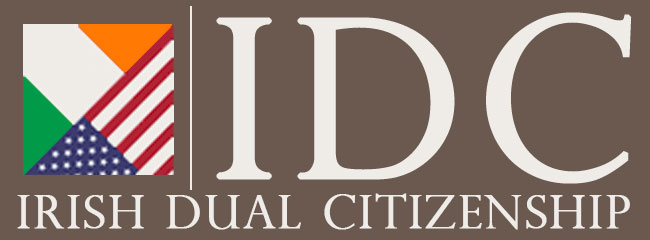St. Patrick: The Patron Saint of Ireland
LEARN THE HISTORY OF ST PATRICK AND ST PATRICK'S DAY
When you think of St. Patrick’s Day, you might picture parades, green shamrocks, and maybe even a lucky four-leaf clover. But have you ever wondered who St. Patrick really was? Long before he became the face of a global celebration, St. Patrick was a 5th-century missionary who changed the course of Irish history. Born in Britain, he was taken to Ireland as a slave as a teenager, but after escaping, he returned to the island with a mission: to spread Christianity. Through his work as a bishop and missionary, St. Patrick played a huge role in bringing Christianity to Ireland and also influenced the conversion of other groups, like the Picts and Anglo-Saxons. Today, he’s celebrated as the patron saint of Ireland, and his legacy lives on every March 17.
The Life of St. Patrick
St. Patrick’s story began in Roman Britain, where he was born into a Christian family. At 16, his life took a dramatic turn when Irish raiders kidnapped him and sold him into slavery. For six years, Patrick worked as a herdsman in Ireland, enduring harsh conditions. During this time, he turned to his faith for strength, deepening his spiritual connection. One night, he dreamed of a ship waiting to take him home, and he decided to escape. He fled to the coast and managed to talk his way onto a ship. After a perilous journey, including near-starvation and another brief captivity, he finally reunited with his family in Britain. But Patrick’s story didn’t end there. In a dream, he heard the “voice of the Irish,” calling him to return to the land of his captivity and spread Christianity. Though he doubted his abilities due to his lack of formal education, Patrick sought religious training and eventually answered the call. Once back in Ireland, he traveled far and wide, baptizing thousands and sharing his faith with unwavering determination. He faced countless dangers, including imprisonment and the constant threat of martyrdom, but his humility and dedication never wavered. Patrick’s writings, like his Confessio, reveal a man of deep faith and sincerity. Despite his struggles with self-doubt, he became a symbol of resilience and devotion, leaving a lasting legacy as the man who helped transform Ireland into a Christian nation.
The Legends of St. Patrick
St. Patrick’s life is surrounded by myths that have grown over time. One famous legend claims that he drove all the snakes out of Ireland, though scientists say that snakes were never there in the first place. Another story says he raised 33 people from the dead, and he’s also said to have miraculously provided food for starving sailors by summoning a herd of pigs. The most popular legend involves the shamrock, which Patrick supposedly used to explain the Holy Trinity to unbelievers. This simple yet powerful symbol became Ireland’s national flower, and people worldwide wear it on St. Patrick’s Day.
Pilgrimages
St. Patrick’s legacy is deeply rooted in Ireland, where pilgrims honor him by visiting sites tied to his life and legends. One of the most famous is a mountain in County Mayo known as Croagh Patrick. Every year on the last Sunday of July, thousands of pilgrims climb the 2,510-foot mountain, some even barefoot! Legend says Patrick fasted here for 40 days and nights, banishing snakes, demons, and magic into a lake below. Along the way, pilgrims stop at ancient Bronze Age cairns, called stations, to pray, and masses are held at the summit chapel. Another significant site is St. Patrick’s Purgatory, located on Station Island, which lies on Lough Derg in County Donegal. According to tradition, Patrick was shown hell’s torments here, inspiring him to strengthen his followers’ faith in the afterlife. Today, pilgrims endure a challenging three-day journey of fasting, prayer, and sleepless nights, all while walking barefoot on the island’s rocky terrain. Known as one of the toughest Christian pilgrimages, it’s a powerful testament to devotion and endurance.
St. Patrick’s Day
Every year on March 17, people around the world celebrate St. Patrick’s Day, honoring the patron saint of Ireland. But what started as a religious feast has evolved into a vibrant, global celebration of Irish culture. St. Patrick, who died on March 17, 461, spent much of his life spreading Christianity across Ireland, building churches, monasteries, and schools. Over time, legends about him grew, like the tales of him driving snakes out of Ireland and using the shamrock to explain the Holy Trinity. Originally, the day was marked in Ireland with religious services and feasts. However, it was Irish immigrants and those of Irish descent, especially in the United States, who turned St. Patrick’s Day into the lively, secular holiday we know today. Cities with large Irish communities, like Boston and New York, began hosting grand parades as early as the 18th century. Today, cities worldwide join in the fun; Chicago even dyes its river green! While blue was once the color associated with St. Patrick, green has taken over, symbolizing the lush landscapes of Ireland and the iconic shamrock. From wearing green to enjoying corned beef and cabbage, people of all backgrounds come together to celebrate Irish heritage. Some traditions have since been adopted by Ireland to attract tourists, and the spirit of St. Patrick’s Day remains a joyful mix of history, culture, and community.
- Nine Surprising Facts About St. Patrick’s Day
- What Miracles Did St. Patrick Perform?
- Seven Facts About St. Patrick You Might Not Know
- St. Patrick’s Day
- The Real Story of St. Patrick
- The Seven Biggest Myths of St. Patrick’s Day
- The Story of St. Patrick, the Patron Saint of Ireland
- Who Was the Real St. Patrick?
- How to Get Irish Citizenship
- The Crazy Stories About St. Patrick That Are Actually True
- The True History Behind St. Patrick’s Day
- Pilgrims Climb St. Patrick’s Holy Mountain
- St. Patrick Raises the King’s Son and Daughter From the Dead
- St. Patrick and Folk Tradition
- Get Irish Dual Citizenship
- St. Patrick: From a Trafficked Slave to an Emblem of the Country
- Patrick, Patron Saint of Ireland
This page was last updated by Marco Permunian


